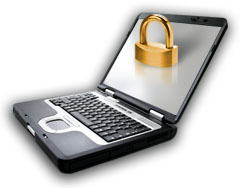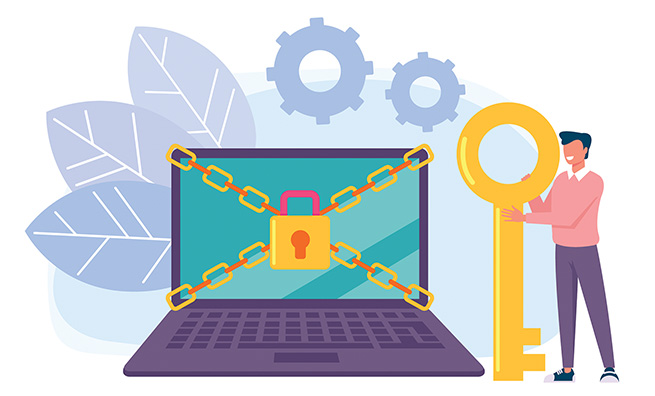
This article takes a view of today’s authentication methods and reasons on why using password-protection as a data security option is still relevant in today’s environment.
Various observations in the past have reaffirmed the importance of password-protection as a security mechanism for data. Most observers believed that passwords would soon be replaced by a stronger more reliable security measure against data breach.
The Way Ahead For Authentication
This, however, has led many to stop focusing on using passwords for protecting their data. Some even keep their information open, and instead rely on a more external data security protocol that is away from their data. This may cause a serious problem, since passwords will remain as the sole part of our authentication method for a long time, even when much stronger authentication factors are deployed.
Terms like Biometrics, Tokenization, and smart cards are here and are being used, albeit with their own distinct flaws. With tokenization, additional hardware needs to be arranged, which means extra purchases. With biometrics, extra hardware is also required. The additional pain of not being able to accommodate certain users does not make it feasible. With smart cards, integrating card readers in every endpoint device does not gel well with a streamlined fluid mechanism. The additional PKI certificate payload also adds on to the bulkiness of such systems, as organizations will need to implement and manage a public key infrastructure as well.
To make matters worse, the recent RSA SecurID, a one-time password token and considered one of the strongest data security mechanisms, was recently compromised. Similarly, biometrics are prone to playback attacks or password injection by compromising a password database. Mobile phones are also vulnerable to hacker attacks through fake base stations that can snatch the calls made to a GSM tower and redirect user calls to their PC, making intercepting calls and getting details on caller information a breeze.
With so much at stake, implementing these security measures not only involves huge costs to be incurred, but such measures have also been prone to attacks, as recent times have shown. And that brings us back to passwords.
Besides the hassle of having to remembering them, passwords are easy to implement, pretty much user-friendly, inexpensive, and extremely scalable. And as more and more web based applications, social networks, subscription based services, and mobile applications require users to sign up for their services, the use of passwords are here to stay with a stronger need for implementation. A whole new section of web services have sprouted up around passwords – services like OAuth, OpenID, Google AuthSub, AOL OpenAuth, Yahoo BBAuth for instance.
How To Use Passwords To Secure Data
An absolute must to-do on the strong password checklist is to require users to select and choose a strong password whilst keeping secure minimum length and other parameters for setting a password.
The use of mixed case, a combination of letters, numbers and symbols can easily be enforced by anyone.
In addition to that, it is important to make notification and monitoring a best practice. Notifying users to change and strengthen their passwords immediately upon suspected attack saves everyone a lot of trouble.
Then there is the lockout system – whereby any unauthorized attempt of accessing your application is set on specific lockout parameters that either does not allow unlimited number of guesses at sign in, limits an unlimited entry of wrong passwords to certain time limits, shuts down your PC, logs off PCs and monitors all password attempts to a log that you can view.
As a best practice, administrators can set guidelines in organizations to change their passwords often.
Preventive Measures To Avoid Data Leakage

1. Implement access control measures such as user authentication and authorization.
2. Establish data privacy policies and procedures that restrict access to sensitive data.
3. Implement encryption and data masking techniques to protect sensitive data.
4. Monitor and audit user access to sensitive data.
5. Use data loss prevention (DLP) software to detect and prevent data leakage.
6. Educate employees on data security and privacy best practices.
What Is Data Leakage?
Data leakage is the unauthorized disclosure of sensitive data. It can be caused by a variety of factors, such as human error, malicious attacks, or system vulnerabilities.
Data Leak With Passwords
A data leak with passwords is when passwords are exposed and made available to unauthorized persons. This can be done through malicious attacks, system vulnerabilities, or human error, such as leaving passwords in plain text or using weak passwords. Data leaks with passwords can lead to serious security risks, such as identity theft and data breaches.
Types Of Data Loss Prevention
The three types of data loss prevention are:
1. Technical Controls – These are measures that are implemented to prevent data from being accessed or stolen, such as encryption, access control, and firewalls.
2. Administrative Controls – These are policies and procedures that are put in place to ensure data is secure, such as user authentication and authorization, data classification, and data retention.
3. Operational Controls – These are measures that are taken to ensure the proper use and handling of data, such as training, monitoring, and auditing.
How Do You Handle Data Leakage?
Data leakage can be handled by implementing a combination of physical, technical and administrative controls. Physical controls such as secure physical access to data centers, locks, and CCTV cameras can help to prevent physical access to data. Technical controls such as encryption, firewalls, access control, and authentication can help to protect data from unauthorized access and misuse. Administrative controls such as user authentication, authorization, data classification, and data retention can help to ensure data is secure and only accessed by authorized personnel. Finally organizational controls such as policies and procedures, training, and audits can help to ensure data security is maintained.
Is Data Leak A Security Risk?
Yes, data leaks can be a security risk as they can lead to unauthorized access and misuse of data.
How Do Password Leaks Happen?
Password leaks can happen in a variety of ways, such as through phishing attacks, malware, weak passwords, or social engineering. Hackers can use these methods to gain access to passwords and other sensitive information, which can then be used to gain access to systems or data.
What Is A Data Leak?
A data leak is an unauthorized release of confidential or sensitive information, such as passwords, credit card numbers, or other personal data. Data leaks can be caused by malicious actors, security flaws, or accidental exposure of data.
Most Common Cause Of Data Leakage
The most common cause of data leakage is human error, such as accidentally sharing confidential information or failing to properly secure systems. Poor security practices, such as weak passwords, can also be a contributing factor. Additionally, malicious actors can use social engineering tactics to gain access to sensitive data.
Types Of Data Leakage
Data leakage can be classified into two main categories: intentional and unintentional. Intentional data leakage is caused by malicious actors, such as hackers, who exploit security flaws or gain unauthorized access to an organization’s systems. Unintentional data leakage is typically caused by human error, such as accidentally sharing confidential information or failing to properly secure systems.
How Can Computer Security Prevent Spillage?
Computer security can prevent data leakage by implementing strong security measures such as encryption, access control, authentication, and monitoring. Encryption ensures that data is protected from unauthorized access and that only authorized personnel can access it. Access control limits the ability of unauthorized users to access data. Authentication verifies the identity of users attempting to access data. And monitoring helps detect any suspicious activity and can alert administrators to take action.
Data Leakage In Cyber Security
Data leakage in cyber security is the unauthorized disclosure of confidential or sensitive data. It can occur through a variety of methods, such as intentional or unintentional disclosure, malicious software, or human error. Data leakage can have serious consequences for organizations, including financial losses, reputational damage, and legal liabilities. To prevent data leakage, organizations must implement strong security measures such as encryption, access control, authentication, and monitoring.
